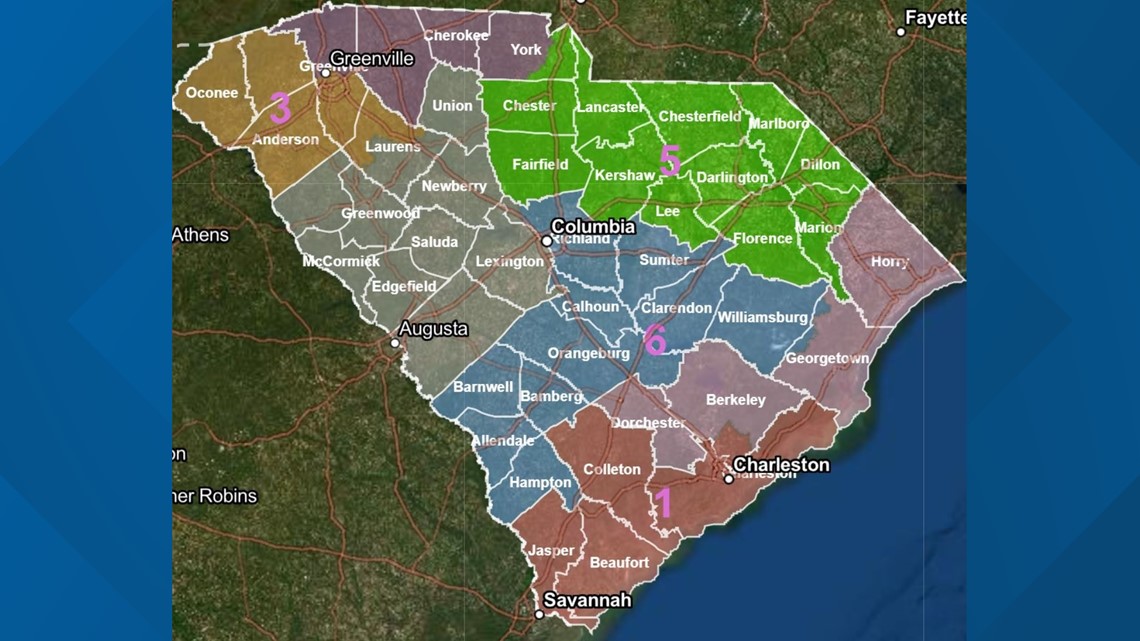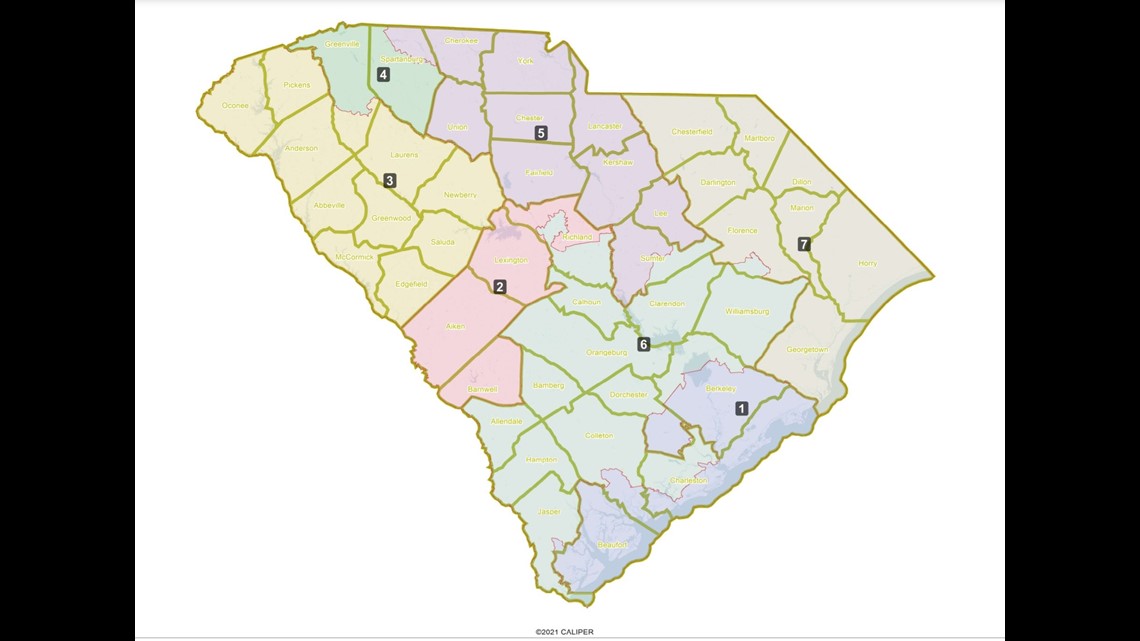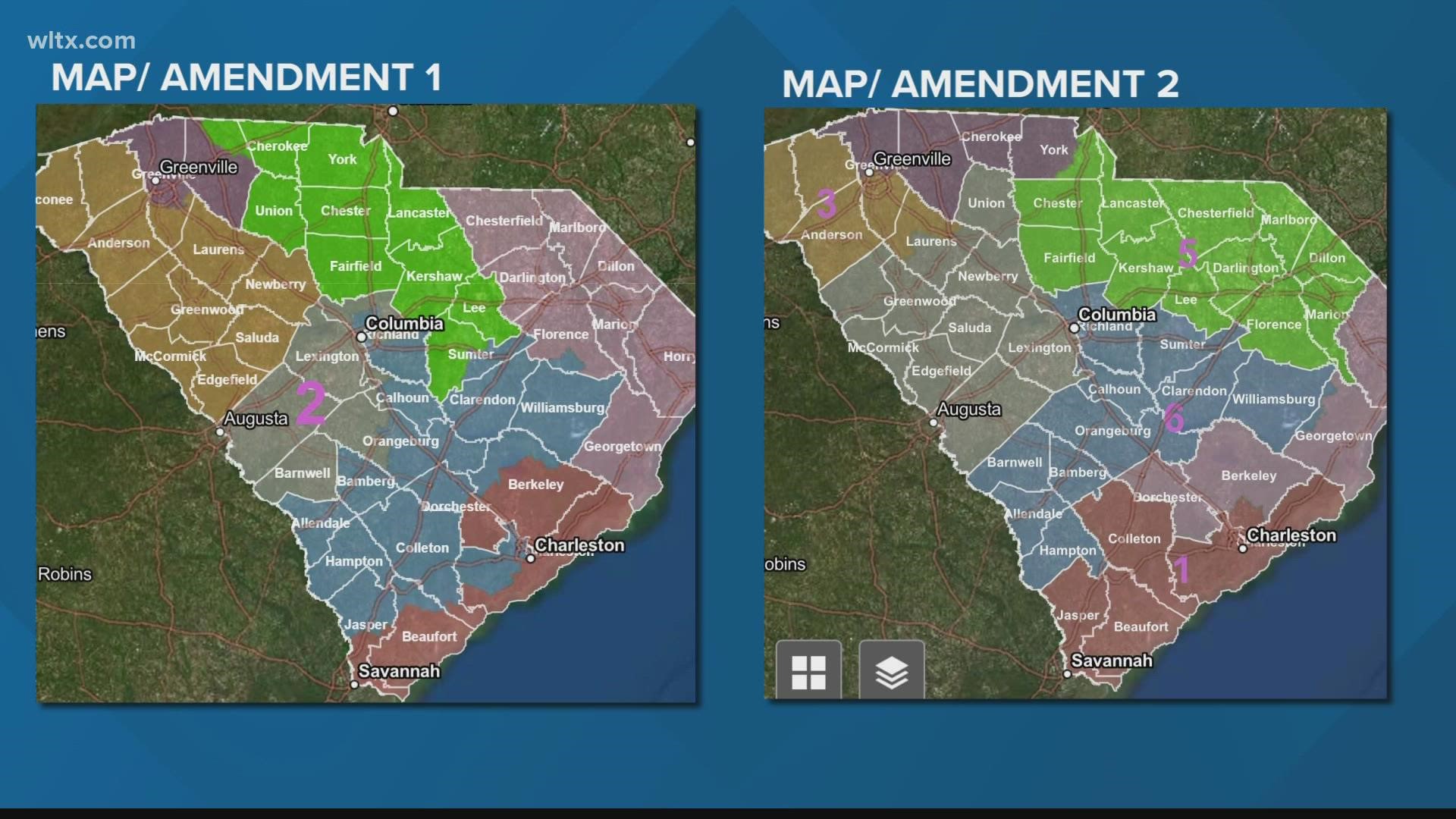COLUMBIA, S.C. — As the South Carolina Senate looks at different ways to redraw voting lines for the seven congressional districts, many are hoping for fairness and transparency.
Both chambers are tasked with redrawing the U.S. House districts, known as redistricting, which determines who people can vote for in an election. The South Carolina House has passed their map proposal for Congressional districts and the Senate is deciding between two maps.
The first map, referred to as "Amendment One" was drawn by Senate staff members. It's similar to existing Congressional lines and splits counties into different districts. In Thursday's redistricting meeting where senators received feedback from the public, the first map received some support from Dorchester County residents. However, an overwhelming number of people were against the map and accused lawmakers of drawing the lines for their own political advantage.


The second map, drawn by Attorney Joseph Oppermann, is referred to as "Amendment Two" or the "whole county map." It keeps most counties intact and received positive feedback for including minorities in districts and keeping communities of interest together.


Senator Dick Harpootlian, who is on the redistricting committee, tasked Oppermann with creating the "whole county map."
Oppermann told Harpootlian during the meeting that his map meets all the redistricting criteria and guidelines while the first map proposal does not. He argued that lawmakers had gerrymandered districts in the first proposal in order to dilute Black votes.
For example, South Carolina has six Republican U.S. House districts and one Democrat, represented by Congressman James Clyburn. In the first map proposal, Clyburn's District 6 stretches from Columbia to Charleston to Savannah.
“Those shapes can only be explained by an overarching racial policy, the point of which to concentrate black voting power in District 6… And otherwise diminish and destroy black voting power in every other part of the state,” asserted Oppermann.
Lawmakers have denied these claims several time in the past but did not respond to Oppermann during the Thursday meeting.
Over 70 people signed up to speak Thursday. Many residents from the Charleston area spoke out against "Amendment One" for splitting up the city. However, others that live in Dorchester and Berkeley Counties supported "Amendment One" because it keeps their counties with Charleston, whereas "Amendment Two" does not.
“I’d like to support Amendment One due to Berkeley County, Charleston and Dorchester staying together as a community, we have a tri-county area,” said Berkeley County resident Robert Jeffcoat.
The Congressional district map passed by the South Carolina House matches very closely to the Senate's "Amendment One" map.


Now, the Senate must decide which map they’ll vote for. Once that happens, the House and Senate will meet in a conference committee to vote on a final plan, to then send to the Governor for approval. Lawmakers hope to finish this process by the end of January.
The Senate Redistricting Committee has the map proposals posted on their website.

